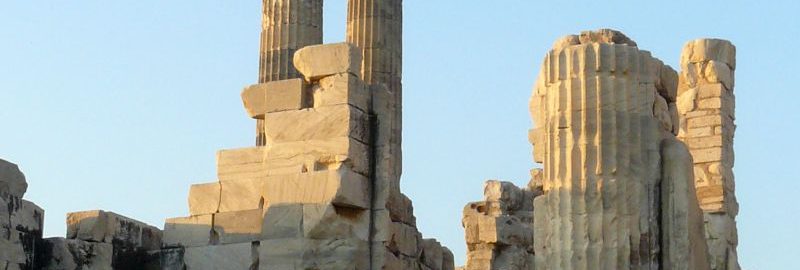Although the center of the ancient world after the Hellenistic period due to the dynamically “spreading” Rome moved to the west of the Mediterranean, in the east remained religious centers “ruling” the minds of people of that world. Everyone remembers the Oracle of Delphi, the Great Temple of Artemis at Ephesus, a strange mostly incomprehensible to the ancient worship of the one God of Jews, the mysterious world of the Gods of Egypt.
Didyma is a somewhat forgotten center of worship of the ancient world, and probably wrongly. Of course, the didyman oracle was not as popular as the Delphi, and the temple of Apollo slightly gave way to the “media” located next to Ephesus in the Great Temple of Artemis at Ephesus (however, years later Apollo took over the Artemis, where one column remained in the swamp, and the house of God Suns in Didyma is one of the most beautifully preserved monuments of ancient worship). It is difficult to write about the dates of creation of such places because, as in the case of Didyma, some cults took over the place of the elders. Didyma had already functioned before the Greeks arrived. The Romans liked the cult of Apollo, but in the days of Theodosius II, the temple became a church. The final fall of the tabernacle took place on a significant date of 1453. When Byzantium collapsed and Mehmed II the Conqueror invaded Constantinople, the earthquake ended the activity of the Temple-Church in Didyma.
According to the tradition in Didyma, the priests could be descendants of Apollo from the ancient Branchid family. The sanctuary itself is located in a hollow around the sacred well (whose outlines are still visible today) and the sacred tree at which the prophetess predicted the future (her statements were, however, only transmitted by the Branchids). The temple in Didyma is also located near Miletus and was connected to the city by the Holy Road, which in its function could be compared to the contemporary Kalwaria Zebrzydowska in Poland. Milet tried to get the most benefit from the proximity of the holy place. In the temple itself was also a statue of Apollo robbed by the Persians, taken to Ekbatana in modern Iran, was recovered by Alexander the Great. Alexander the temple owes its present appearance to the wonderful Hellenistic finish of the columns. The temple has never really been finished. The back of the temple is unfinished columns, and in the corner of the stand lie the famous “Roman jellyfish head” symbol of modern tourist Turkey. I particularly liked the intricate finish of the columns at the entrance to the temple, they are beautiful. 10 years ago, the temple was surrounded by Turkish slums, but I do not know how it is today.
- Didyma – Temple of Apollo
- Didyma – Temple of Apollo
- Didyma – Temple of Apollo
- Didyma – Temple of Apollo
- Didyma – Temple of Apollo







